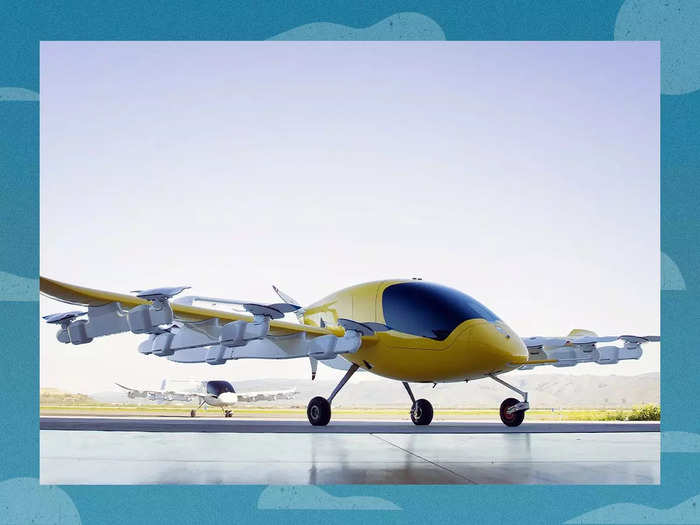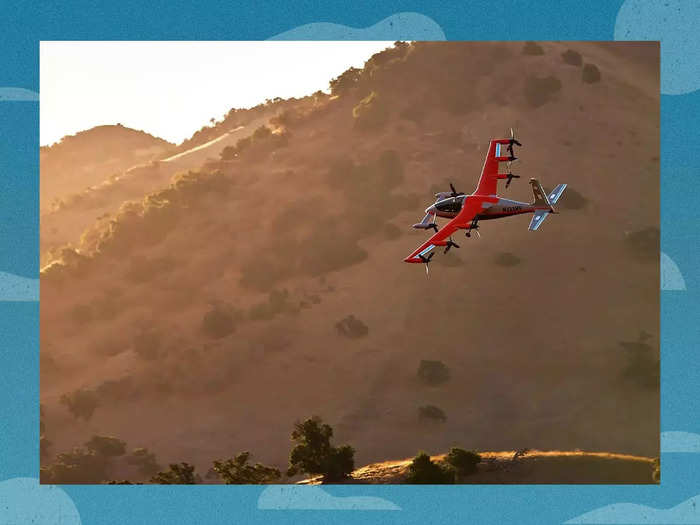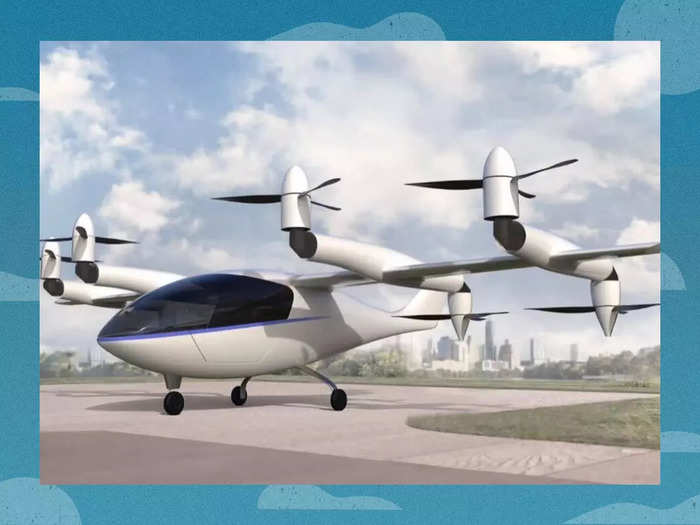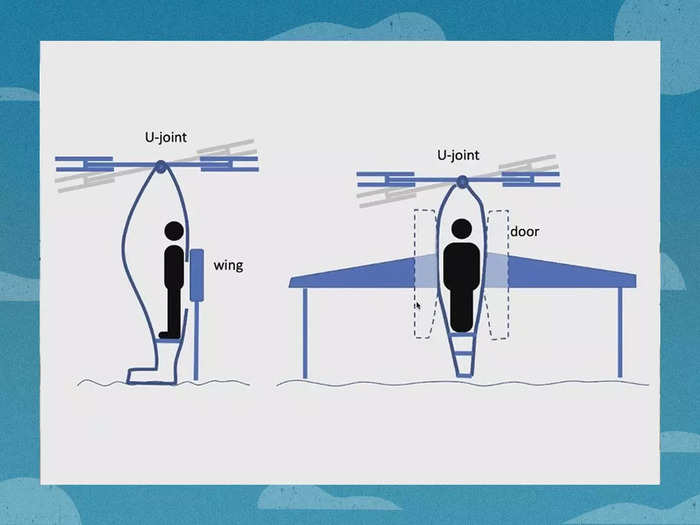Google founder Larry Page's flying-car company Kittyhawk went through a lot of wacky designs during its eight-year run, including the once-promising Flyer.Kitty Hawk
Last September, Larry Page's flying car company Kittyhawk, closed its doors. It was a stunning failure for what was once the vanguard of the eVTOLs (electric vertical-takeoff-and-landing aircraft) industry.
The company was started in 2015 and explored a range of concepts for eVTOLs over its lifespan. Backed by the bottomless pockets of Google's cofounder, and run by Sebastian Thrun, the "Godfather" of self-driving cars, it seemed that success was all but assured for Kittyhawk.
But internally, the company was constantly shifting gears and scrapping long-gestating plans. Frustrated with the lack of progress, Page eventually tried to leapfrog the entire eVTOL industry with more radical ideas that were supposed to dramatically reduce the cost of flying cars — from 3D printing an entire vehicle to swinging passengers between vehicles as they ran out of fuel. Ultimately, the mad scramble failed and the company shuttered in late 2022.
In our exclusive story on the rise and fall of Kittyhawk, we revealed several of the company's ideas for new flying cars. Some were wilder than others, including one a former employee referred to as a "reverse Boba Fett Slave I ship" — a reference to the legendary Star Wars villain's spacecraft. Another of the ideas, an autonomous taxi named Wisk, is still alive as part of a joint venture with Boeing.
Here's a walk through the halls of Kittyhawk's various flying-car experiments.
Flyer
Kittyhawk
Flyer was Kittyhawk's first swing at a flying car designed for sale to the general public. The original model was cobbled together from a surfboard and drone parts in a weekend, according to former employees, but by 2018 the design had developed dramatically. In fact, the company was training amateurs to fly it with just an hour of training.
However, Flyer had severe limitations: it couldn't run for longer than 20 minutes at a time, it could be flown only over water at a maximum speed of 20 mph, and it lacked a wing. Insiders also say the Flyer was brittle and that the company lacked confidence it would hold together. In 2020, the company retired it.
Cora
Kittyhawk
Larry Page's original flying-car venture, Zee Aero, was founded in 2010. Zee was working on a promising flying car concept named Cora, which it continued to developed after Zee was merged into Kittyhawk. In 2019, Kittyhawk announced it would spin out Cora again – this time as a joint venture with Boeing named Wisk.
The goal is to one day turn Cora into a flying taxi that would be remotely piloted – and summed to the rider with an app. Progress is still ticking along: Boeing invested a further $450 million into the Wisk partnership in January 2022. More recently, it unveiled a four-seater version of the aircraft.
Heaviside
Kittyhawk
In 2019, Kittyhawk revealed it was pivoting to a new electric aircraft named Heaviside. It would be quieter than Flyer and, most importantly, autonomously piloted. H2 – the second Heaviside iteration – was arguably the most advanced eVTOL Kittyhawk built.
H2 had a single seat (although leaders debated putting two seats in a future model) and could travel more than 100 miles on a single charge.
Heaviside 3
Kittyhawk employees began working on a new version of Heaviside before the project was completely shut Insider source
Toward the end of Kittyhawk's life, work was underway on H3, the third iteration of the company's Heaviside project. The new version was designed to have a longer range and svelter look. Several concept designs were shared internally, including one that would have dropped the nose-mounted wing, known as a canard, and a fixed wing. The design was similar to Cora, the flying car Kittyhawk spun out with Boeing.
The Tailsitter
Larry's final frontier: an idea for a flying car that would have launched vertically Insider source
During Kittyhawk's final summer, Larry Page asked his engineers to explore an idea he'd plucked from the mind of his personal muse, Nikola Tesla. The vehicle would have taken off and landed in a vertical position – requiring less parking space – but tilted to a horizontal position in the air. The concept is known as a tailsitter, but it became affection ally referred to by some staff as the "Larry Lozenge" or "The Egg." A model capable of holding a pilot was built, but it never flew.
K1
Insider source
Some Kittyhawk employees hated the name "Heaviside," which inspired images of something slow and cumbersome. There was a desire to name the next aircraft something entirely different. The K1 may have become the Heaviside successor, but the idea didn't make it far. "It was the first design that fully acknowledged there would be no pilot in the production vehicle," a former employee said. Instead, it would have been remotely piloted from the ground and – one day, hopefully – entirely autonomous.
Kittyhawk was also exploring ideas to reduce the cost of manufacturing eVTOLs, which could have included building more of the structure out of aluminum.






